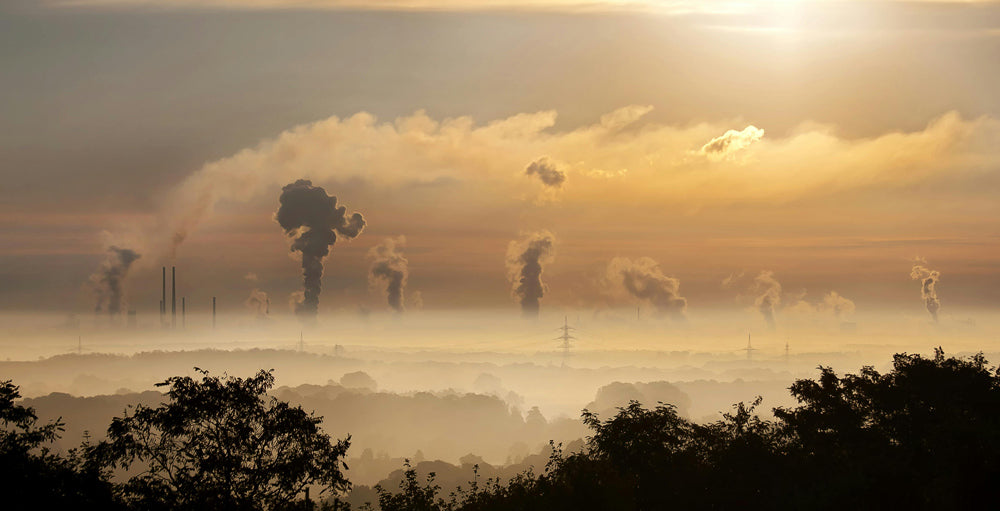Methane Pollution Is Pushing the Planet to the Brink
Matthew Russell
Methane, a potent greenhouse gas, is responsible for nearly one-third of today’s global warming. Though short-lived compared to carbon dioxide, methane’s heat-trapping power is 80 times stronger in the short term, making it a dangerous contributor to climate change. Its presence in the atmosphere is growing faster now than at any time since the 1980s, and U.S. efforts to curb emissions are ramping up.
Tackling methane pollution is critical to slowing global warming and protecting the planet for future generations.

Methane is 80 times more potent than carbon dioxide over a 20-year period.
The Dangers of Methane
Methane is not just a significant contributor to climate change; it also poses risks to human health. As a key component of natural gas, methane leaks from oil and gas operations, landfills, and agriculture. Livestock, for example, accounts for a large share of emissions through the digestive processes of cattle and the breakdown of manure. Natural gas systems, meanwhile, emit methane during extraction, processing, and transportation. Even landfills contribute through the decomposition of organic waste. Despite being a naturally occurring gas, human activities have amplified methane levels, exacerbating its warming effects.
Methane’s environmental impact is alarming. According to the Environmental Protection Agency, methane emissions accounted for 12% of all U.S. greenhouse gas emissions in 2022, with energy production, agriculture, and waste management sectors being the largest sources. Although methane breaks down in about a decade, its warming potential over a 20-year period is substantially higher than carbon dioxide, making immediate reductions essential to slowing climate change.

Methane leaks are responsible for nearly one-third of global warming today.
Efforts to Reduce Methane Emissions
The U.S. government has launched multiple initiatives aimed at reducing methane pollution. In June 2024, the U.S. Department of Energy (DOE) and the Environmental Protection Agency (EPA) announced $850 million in funding to help oil and gas operators monitor and reduce methane emissions. This initiative builds on President Biden's Inflation Reduction Act, the largest climate investment in U.S. history. The program focuses on reducing methane leaks from small operators, improving emissions measurement, and providing data to communities most affected by pollution.
EPA Administrator Michael Regan emphasized that these funds will help deploy advanced technologies to pinpoint the sources of methane emissions.
“We’re building on strong standards and historic progress to cut methane pollution and protect communities across the country,” Regan said in a statement.
By enhancing methane detection and accelerating repairs to leaking infrastructure, the program aims to deliver immediate reductions in harmful emissions.

U.S. oil and gas operations emit far more methane than previously estimated.
Technology and Innovation in Methane Monitoring
Technology plays a key role in reducing methane pollution. Satellite data has revealed that methane emissions from U.S. oil and gas facilities may be significantly higher than previously reported by government estimates, according to Earth Observatory. NASA’s Tropospheric Monitoring Instrument (TROPOMI) aboard the Sentinel-5 satellite allows scientists to track methane emissions from space. A 2019 study using this satellite data found that U.S. methane emissions were 13% higher than EPA estimates, particularly from oil and gas operations and landfills.
The ability to monitor methane from space is a game-changer. Satellites like TROPOMI provide high-resolution images of methane emissions, helping researchers identify hotspots and work with industry and policymakers to address the leaks. Additionally, ground-based sensors and airborne measurements contribute to more accurate tracking of methane emissions.
Stanford University researchers also found that methane leaks in the U.S. oil and gas industry may be three times higher than government estimates. The research used airplane-borne sensors to measure emissions from wells, pipelines, and storage facilities across six of the nation's most productive regions, such as the Permian Basin.
"Costs aside, the main message here is that some regions show emissions at rates well above those the government uses to estimate methane losses,” explained Stanford professor Adam Brandt.

Methane pollution is a silent yet deadly accelerant of climate change.
Challenges Ahead
Despite the advancements in monitoring, reducing methane emissions is still an uphill battle. Methane is emitted from a wide range of sources, including energy production, agriculture, and waste. The oil and gas industry is a significant contributor, with leaks occurring throughout production, processing, and transportation. Landfills also pose a substantial challenge, as waste continues to decompose and emit methane.
In response, the U.S. government has introduced stricter regulations on methane emissions from oil and gas operations. In 2023, the EPA unveiled new rules to limit methane pollution, focusing on leaks and wasteful flaring practices, reports the Environmental Defense Fund. These rules are part of the broader Global Methane Pledge, which aims to reduce methane emissions by 30% below 2020 levels by 2030. The European Union and China have also committed to methane reductions, signaling global momentum in the fight against this powerful greenhouse gas.

U.S. government invests $850 million to reduce methane emissions from oil and gas.
A Path Forward
The urgency to cut methane emissions cannot be overstated. Methane’s potent warming potential makes it a prime target for reducing global temperatures in the near term. With new regulations, technological innovations, and international cooperation, significant progress is being made. The U.S. is taking a leading role, deploying advanced detection technologies and investing heavily in methane reduction efforts. Yet, challenges remain, and continued vigilance is necessary.
As methane continues to rise in the atmosphere, the need for action becomes ever more pressing. The U.S. and other nations must continue to prioritize methane reduction to protect both the climate and public health.
Click below to take action and support efforts to reduce methane pollution!

